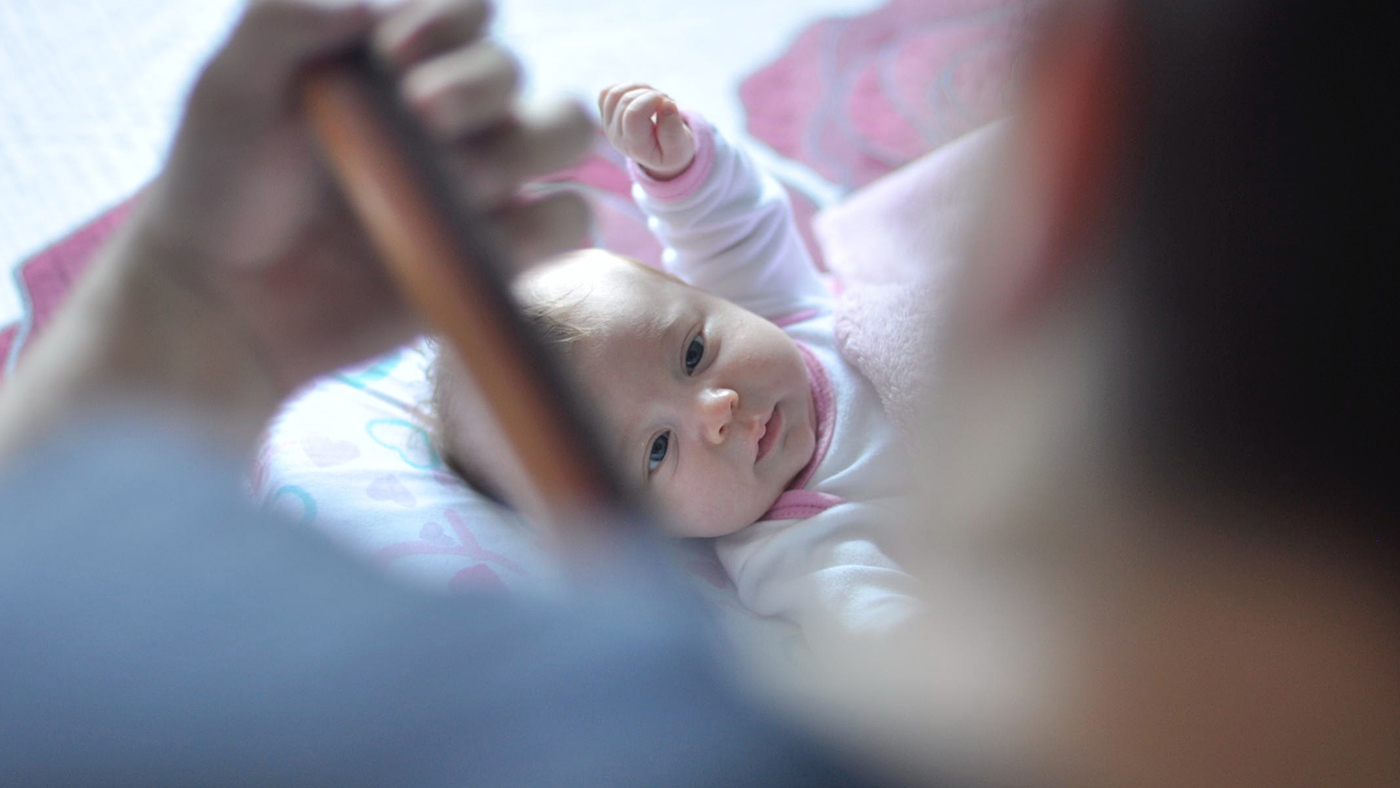Head control: how it develops and what else it supports

When your baby was born, they couldn't support their head, and when they held their head briefly in the centre this was linked to movements of their arms and legs. Now, they are beginning to develop more control of their head and when lying on their back they can turn their head to look at objects or events that interest them. This is a fascinating launchpad for so many things and has links across all of the other streams!
The development and direction of head control
The development of your baby's control moves from head downwards and from the centre of their body out to the extremities. Your baby's head control begins with being able to hold their head steady when in different positions, so keeping their head in the centre when on their tummy or back.
Vision, understanding and future functions
As your baby's head control develops, they will be able to turn their head to look at items that interest them. Being able to look at objects and move their head to follow an object supports your baby to develop their understanding of the world and of the things that they see.
In the future, the ability to visually track either a moving object or a series of stationery objects or symbols will support your child as they play ball games and as they draw, write and read.
Posture and movement
The development of head control is the first step towards developing control of posture – an important part of your baby developing the skills that they need to move.
Initially, when they are lying on their back their body, head and limbs are supported, their head will often be turned to one side, and they will be able to move their arms, legs and head without needing to control their posture.[1]
As they develop strength and control they will be able to turn their head and hold it in the centre, perhaps to look at you as you change their nappy or to look at a toy held close to them. In time, this control of their posture will enable your baby to sit, crawl, stand and walk.
Fine motor skills
Their development of posture will, as their fine motor skills develop, help your baby to position themselves in order to manipulate objects.
Head control and balance
Movement and control of their head also supports your baby to develop their balance.
Keeping their head steady provides a reference point for their balance system.[2] The reference point provided from your baby’s head position can then be used, as your baby develops, with vision and other muscles groups to help them maintain their balance and posture.
As they can adjust the position of their head to maintain their balance, it also enables them to respond to the things that they see and hear – turning their head towards interesting sights and sounds.
Social, emotional, language and cognitive development
As your baby becomes more able to look at people and objects that interest them, this will support their development in social, emotional, language and cognitive streams as they can begin to respond to other people and to look towards the things that interest them.
How tummy time and being held in different positions helps
Over the coming months, your baby will develop further control of their head: they will be able to hold their head up and look around and adjust the position of their head when held in different positions.
Giving your baby time in various positions, including regular tummy time when they are awake and alert, and holding them in different ways, will help them to develop further control of their head.
References:
[1] Sugden, D & Wade, M. (2013) Clinics in developmental medicine. Typical and atypical motor development. London: Mac Keith Press.
[2] Goddard-Blythe, S. (2004). The Well Balanced Child: Movement and Early Learning. Stroud: Hawthorn Press.